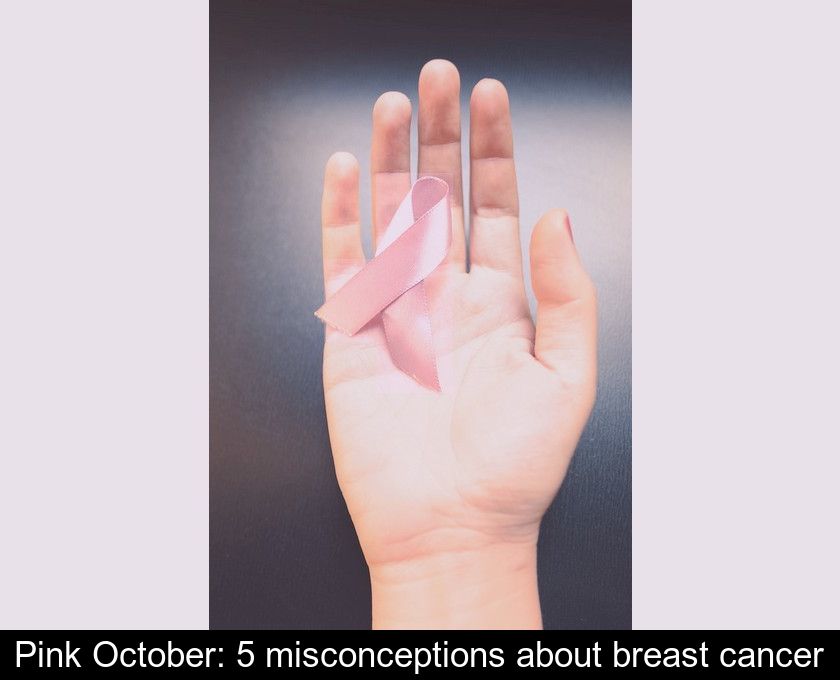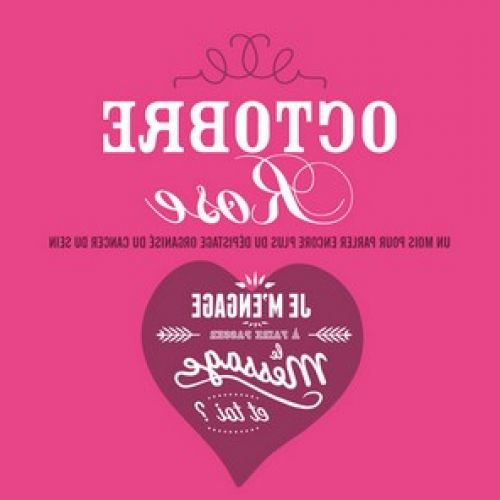Pink October: 5 Misconceptions About Breast Cancer
The Pink October operation has just begun. Each year, this prevention campaign is an opportunity to raise awareness of breast cancer and encourage women to be screened. Today, we propose to fight 5 preconceived ideas about this female cancer.
1- We can't prevent this cancer
Among the 5 common misconceptions about breast cancer, the first one that you absolutely must fight is the belief that you can't prevent it.
Of course, this cancer is not like lung cancer where you can simply stop Smoking to reduce the risk of the disease very significantly.
Breast Cancers are multifactorial diseases that sometimes have a hereditary character and only about 40% of the risk factors can be acted upon.
For example, it is known that it is best to avoid a diet high in animal fats, taking hormones after menopause, being overweight, alcohol and, to a lesser extent, smoking.
A healthy lifestyle and regular physical activity have a protective effect. But as this may not be enough, it is very important to participate in organized screening from the age of 50.
2- Screening is useless
Some women do not participate in organized screening because they do not see the need for regular mammograms.
Thinking that screening is useless is a second misconception that must be fought at all costs because an early diagnosis can save your life and avoid very heavy treatment.
Indeed, even if you have developed breast cancer, mammography screening can detect breast tumors at a very early stage.
Detecting cancer as early as possible can increase the chances of a cure and reduce the severity of the treatments you will need to undergo, both for surgery and for other treatment strategies such as radiation and chemotherapy.
3- Screening is dangerous
Other women are afraid of mammograms because they are unpleasant and could be dangerous.
A common misconception is that organized screening exposes women to toxic radiation when they are not sick.
Of course, no one is going to go for this test because it is unpleasant (it involves squeezing the breasts hard for a few seconds) and can result in a life-altering diagnosis.
While it's perfectly normal to have these fears, on the other hand, it's wrong to think that radiation exposure is dangerous.
The dose received from a full breast exam of both breasts is about 4.7 milligrays. In comparison, a lumbar x-ray is 2-4 times more radiating and a single abdominal scan 13 times more radiating.
Moreover, if we add up all the mammograms performed in a lifetime as part of screening, the radiation dose is lower than that received during a scan. This exposure is therefore reduced.
To note: it is also important to know that the more compressed the breast is, the lower the radiation dose. In addition, it is very important to position yourself well in the device because the more correct your positioning is, the more reliable the diagnosis will be.
4- This cancer affects mostly older women
Organized screening is for women aged 50 to 74 because breast cancer most often develops around age 60.
However, younger women should not completely disregard their breast health because this cancer can affect all women, at very different ages.
Today, about 10% of breast cancer cases occur in women under the age of 35 and nearly 20% of Cancers diagnosed in France occur before the age of 50. In short, breast cancer before the age of 40 is rare but it does happen.
The received idea that breast cancer affects exclusively older women is completely false. Every year in France, it is about 5000 women under 40 who are diagnosed with a breast tumor.
As this risk is generally underestimated, young women are not sufficiently warned and monitored. For them, it is very important to go regularly to the gynecologist and to perform a check-up at least once a year.
They should also learn to know and monitor their breasts well, in order to notice if any abnormality appears. They can especially practice breast self-examination for better prevention of this cancer.
5- This cancer always requires removal of the breast
Another common misconception about breast cancer is that once a tumor is found, the breast must be removed.
This is not true, as today surgeons most often perform partial removal consisting of simply removing the tumor and a safety margin.
This partial removal followed by radiation therapy gives the same cure rates as total breast removal. You don't necessarily have to sacrifice your breasts to increase your chances of recovery.
Total removal of the breast or mastectomy is sometimes necessary, but only in very rare cases (less than 5% of patients).
The operations are much lighter than before and the techniques used are less and less invasive. Plastic surgery is also used to reconstruct the breast, sometimes during the same surgery as the removal.











